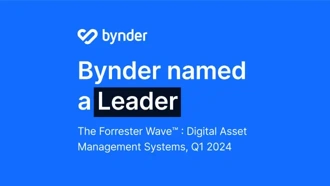What is Marketing Resource Management (MRM)?
Marketing Resource Management (MRM) refers to the tools, technology, and software that help busy marketers to automate, declutter, standardize, and organize their marketing technology stack.
Today’s brands work with a wide range of sales and marketing platforms. It can be a challenge to integrate and centralize the different tools, maximize performance, and streamline workflows. Team members who plan, create, execute or optimize marketing campaigns can use marketing resource management platforms to increase efficiencies and get more ROI from their marketing activities.
Marketing resource management software helps marketers to plan, schedule and budget. It improves brand management and offers better visibility over how different types of content are performing—therefore improving campaign ROI.
[Pro Tip] Investing in software such as MRM or digital asset management comes with many benefits. But how exactly do you calculate the ROI of such an investment? Check out our free guide and discover the quantitative benefits of a DAM system.
Best features for Marketing Resource Management software
Here are a few features to look for if you are investing in an MRM tool.
Good integration with your martech stack
Your marketing resource management tool should help to simplify and unify your martech stack. To achieve this it must integrate well with the majority of the tools that you and your team use. Many MRMs will integrate data with your social media management tools as well as your CRM and CMS. You may need a separate digital asset management (DAM) system to store, organize, edit and publish your images. The ideal MRM will be able to sync all the systems and coordinate updates via robust APIs or a native integration.
End-to-end campaign visibility
The MRM will only be successful if it offers complete visibility throughout the entire content planning, execution, and delivery process. All stakeholders need a transparent view of each campaign’s progress and performance—who is doing what, when, and how. This ensures accountability, increases productivity, optimizes current performance, and helps to identify opportunities for improving campaigns in the future.
The ability to create personalized content at scale
Supplying potential and current customers with valuable content based on their preferences and interests is marketing gold dust. Your ideal MRM should facilitate creating and distributing personalized marketing content to help boost your lead generation and sales activities.
Be able to scale with your business as it grows
Marketing resource management systems are dynamic and always evolving. Your MRM should offer customizable workflows and have the flexibility to adapt to your business as it evolves.


